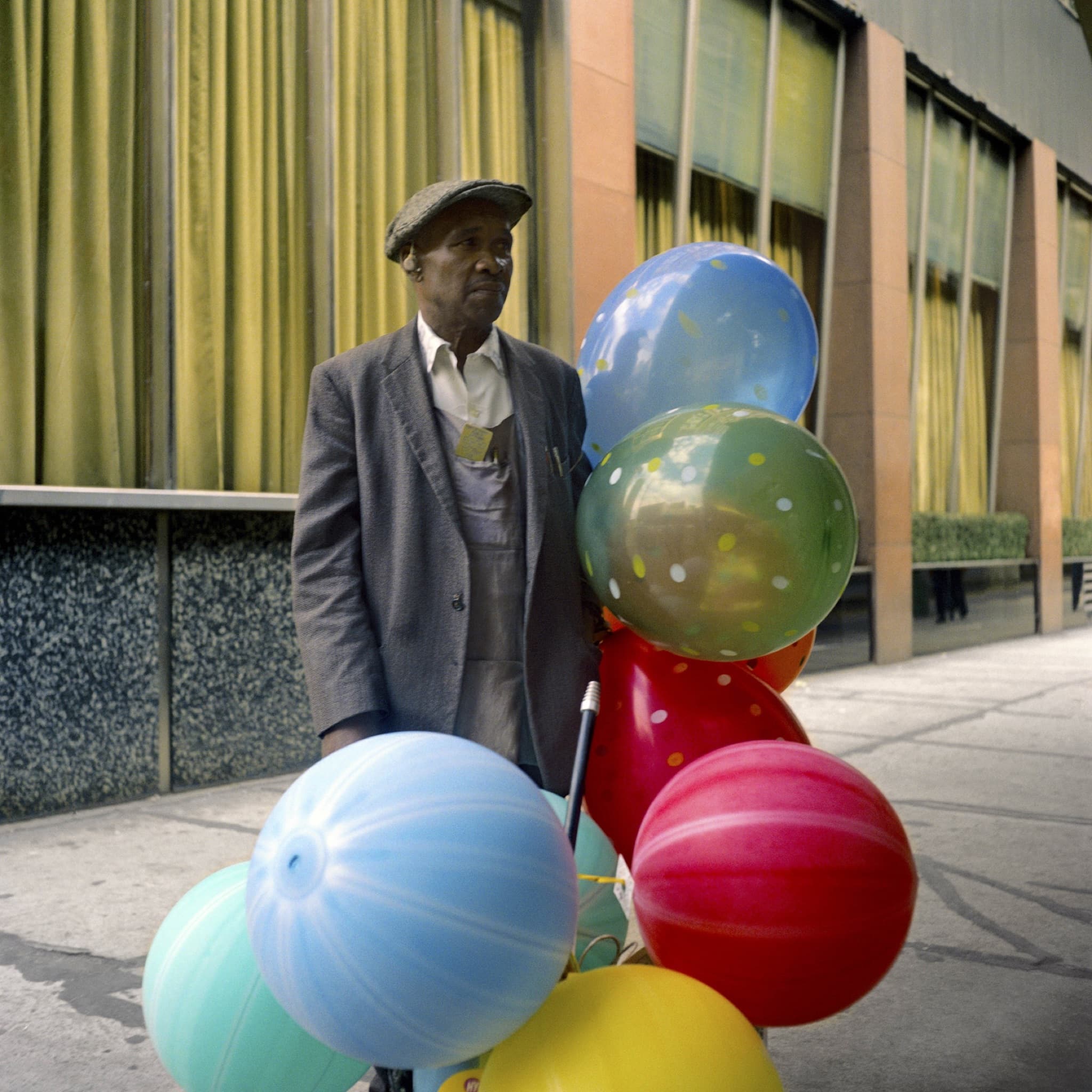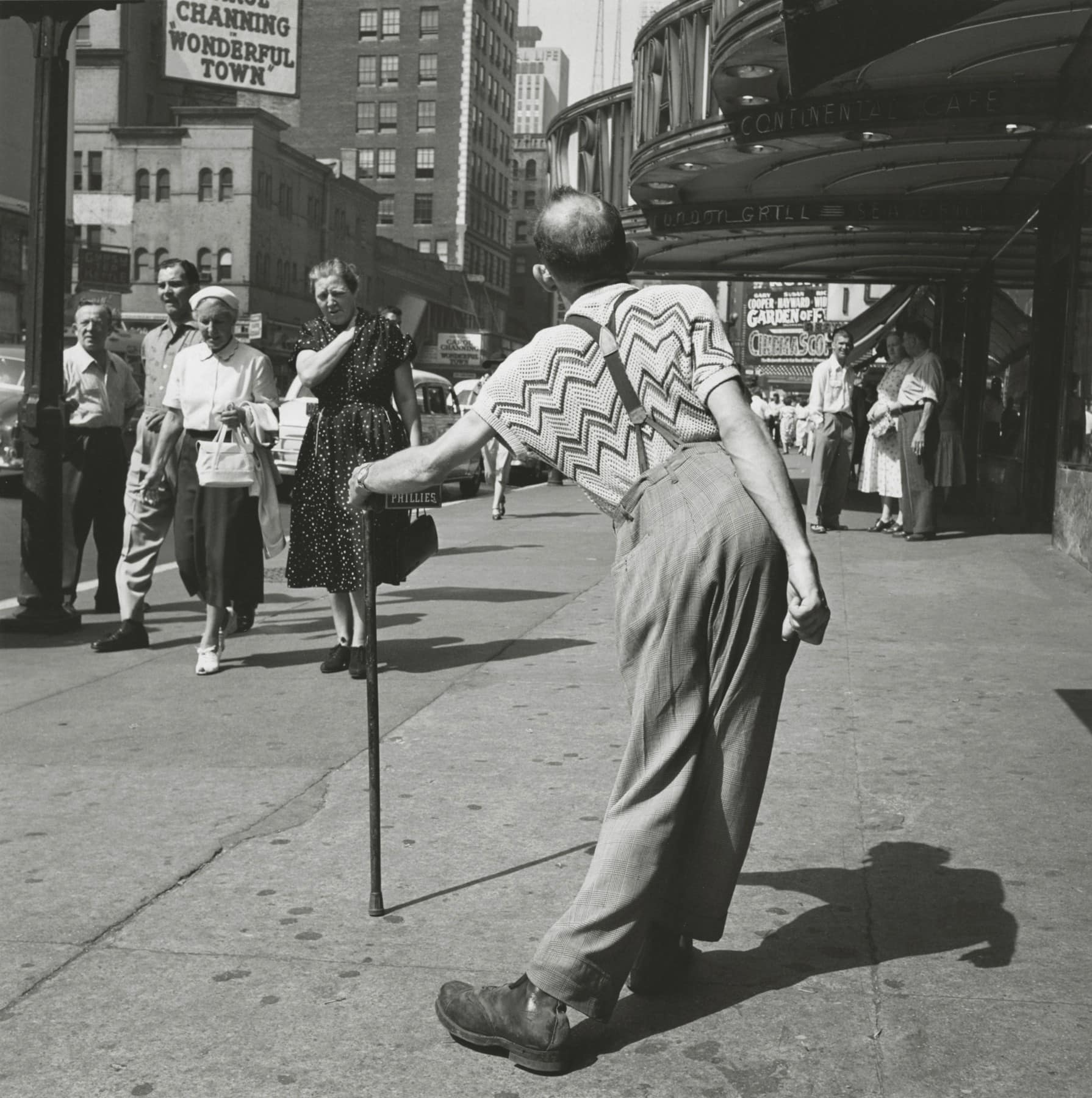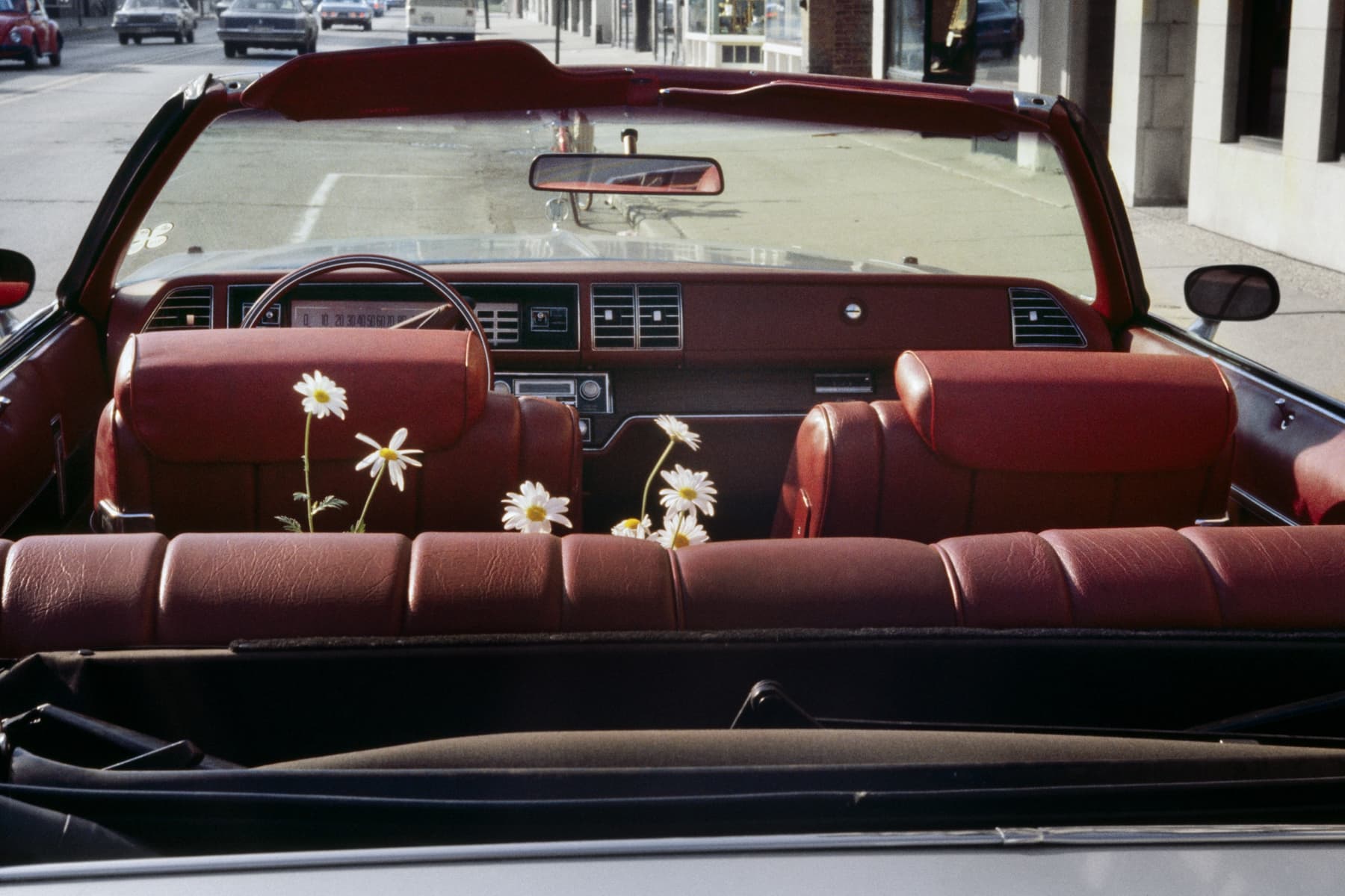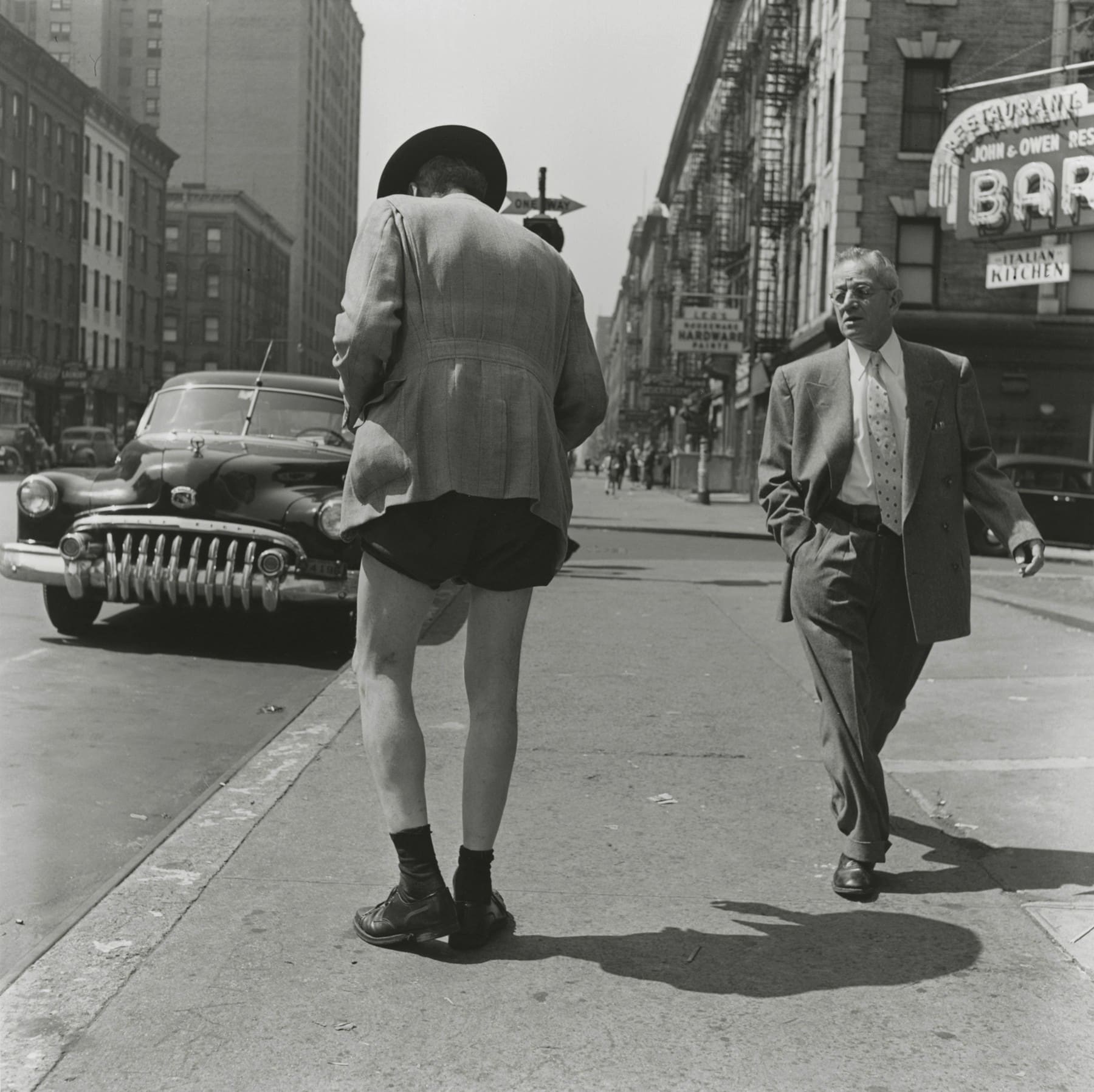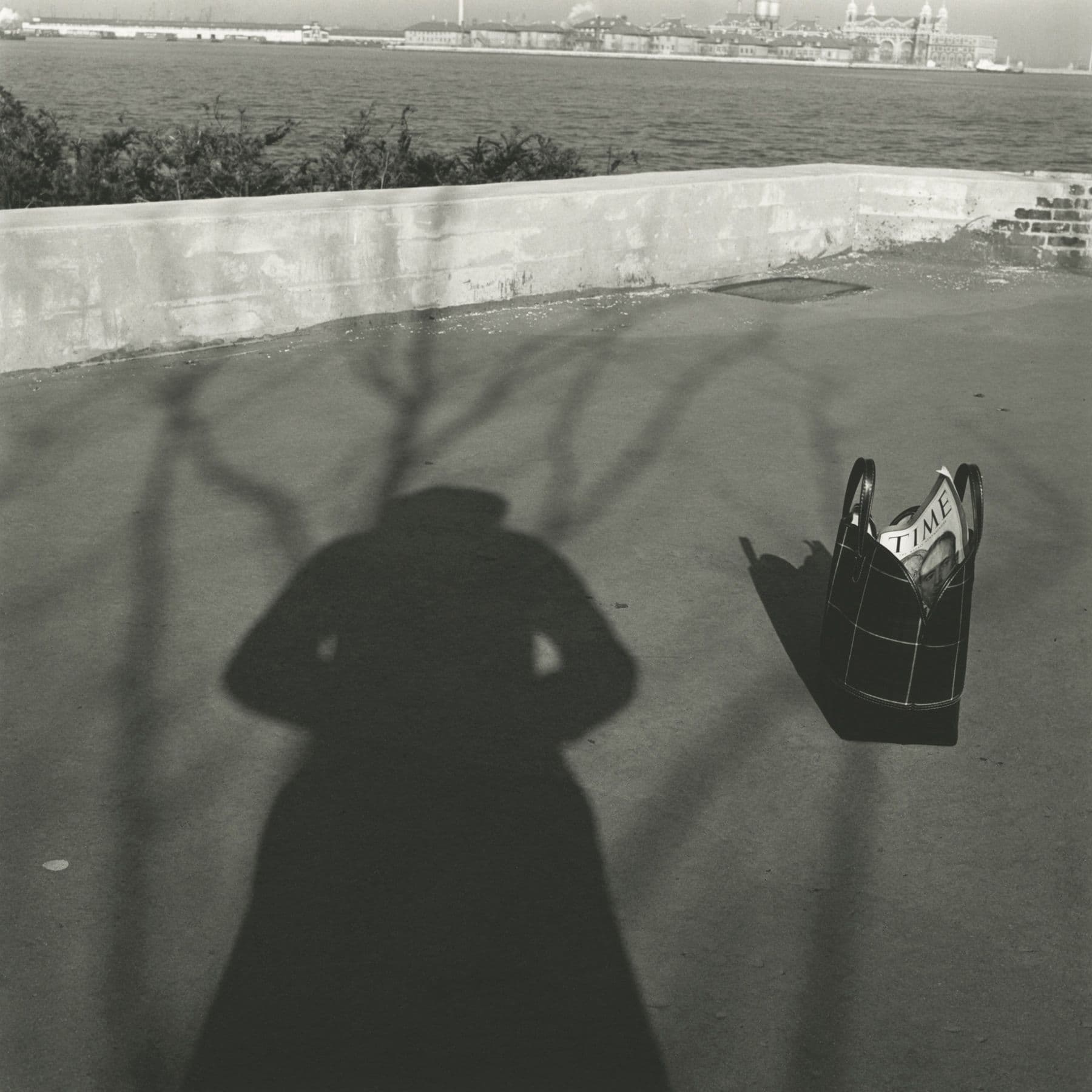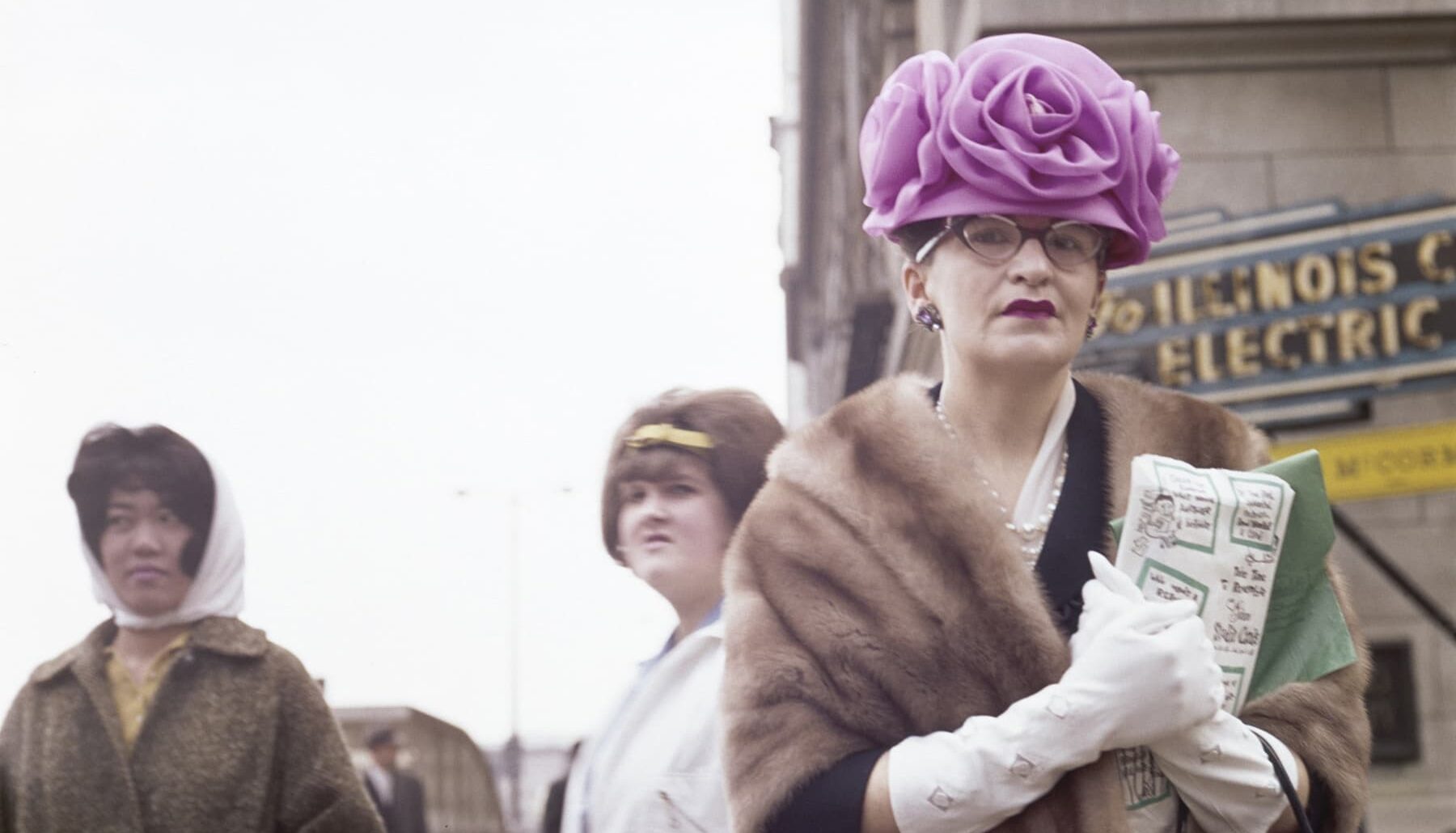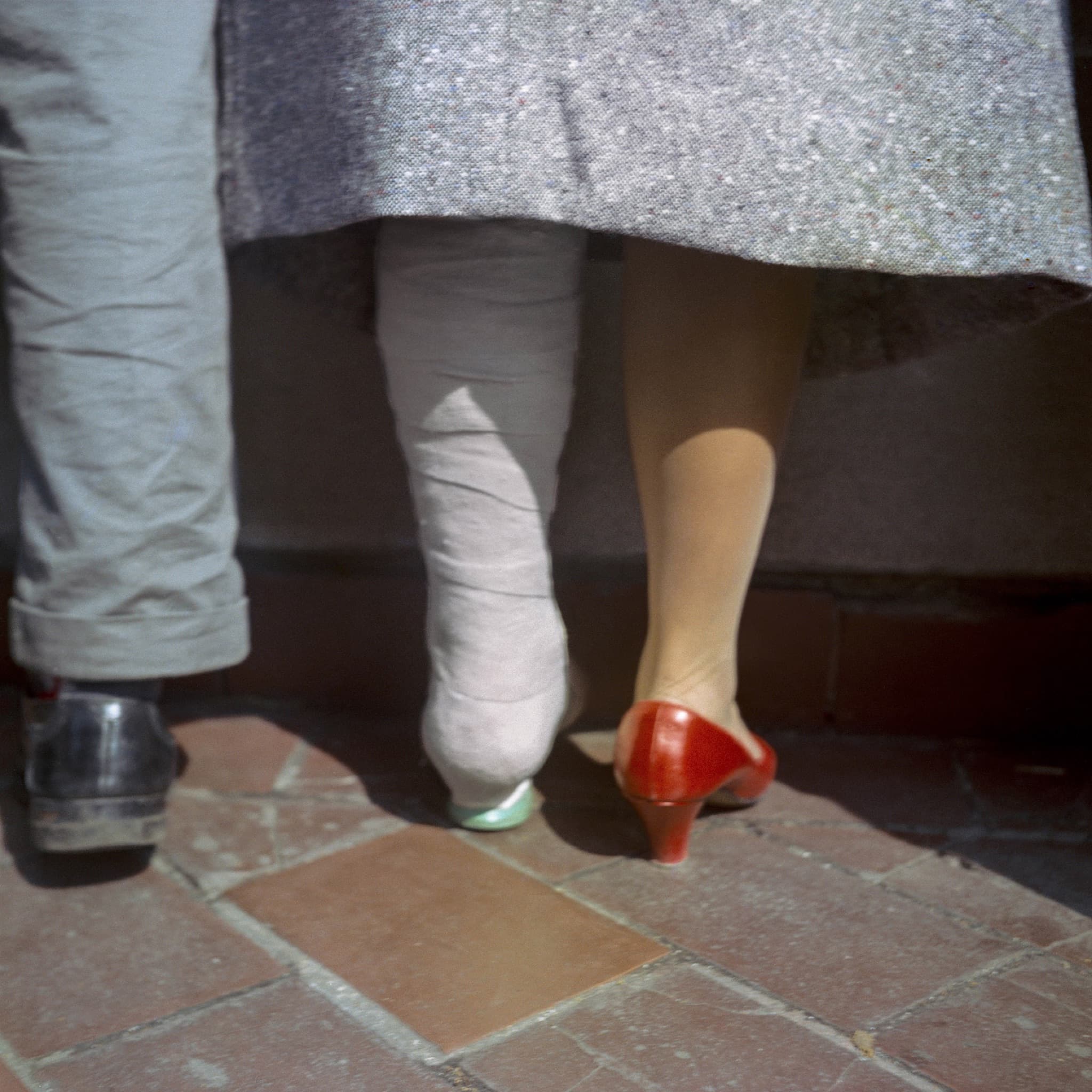The discovery of Vivian Maier was one of the greatest sensations in the history of photography after the Second World War. The American was completely unknown as an artist before thousands of negatives turned up at an auction in Chicago in 2007 and her work has aroused amazement and admiration in illustrated books and exhibitions all over the world since 2011. Today, it is impossible to imagine street photography from the fifties to the seventies without it.
Maier's visual world can now be experienced at the Hermann Noack Workshop Gallery in the exhibition "Streetqueen", which is being organised in cooperation with the Howard Greenberg Gallery in New York. Around 120 prints - including 22 of the rare vintage prints and some images recently developed for the first time - present all phases of Meier's work and also highlight the importance of her colour photography, which she has favoured since the sixties.
The life of Vivian Maier, who was born in New York in 1926 to a French mother and an Austrian father, was overshadowed by her childhood in a dysfunctional family and a constant lack of money. For decades, she worked as a nanny in the affluent suburbs of Chicago. In the years before her death in 2009, she was completely impoverished and threatened with homelessness, but received support from some of her former employers. From 1949, when she first bought a camera during a trip to France, she devoted almost all of her free time to photography. Without any training or support from mentors, she developed great mastery and a very unique view of what she saw on the streets of New York and later in Chicago.
Maier captured the people of the big city in moments when they thought they were unobserved and were completely with themselves. Even if they are split-second shots and the photographer must have been very discreet in her approach, her pictures reveal entire stories and often haunting character portraits. What is important to her is the social fabric of the streets, the view of people in everyday life and also of those on the margins of society. Maier had a sense for the seemingly trivial, such as a hairstyle from behind, a lost shoe, the parcel in a man's hand or architectural details. Fascinating are the refined compositions, which always have something casual about them, sometimes with bizarre or quirky elements. Maier often depicted himself - with a stern, closed face - in mirrors, shop windows or merely as a shadow.
Maier, who kept her private life strictly private even from the families she lived with, apparently never showed anyone her photos. A total of around 150,000 photographs were taken, the vast majority of which Maier never even got to see as contact prints due to a lack of money. The owners of the negatives (led by John Maloof, the discoverer and most important promoter of Maier's work) have so far only issued around 150 limited edition prints from the huge stock of the estate. As most of them are sold out, it is a rare opportunity for Howard Greenberg to now pass on all the prints on display - including numerous famous pictures that have shaped our image of Maier - to collectors and lovers of Maier's art who are interested. This also applies to the very rare vintage prints on display, which Maier produced himself or commissioned during his lifetime.
During the exhibition, screenings will show some of the artist's little-known Super 8 films, as well as John Maloof's documentary "Finding Vivian Maier" (nominated for an Oscar in 2015).
to the exhibition: Fotoausstellung – Streetqueen
